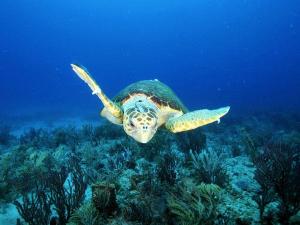Looking for design inspiration? Browse our curated collections!
August 18th, 2011 - 01:11 PM

Itís sea turtle nesting time in Southwest Florida. For some people that means an inconvenience and a nuisance. Beaches have restricted areas flagged and protected. Residents with beach homes donít have full access to their own property. And all outdoor lighting along the shoreline must be turned off at night.
Why all the fuss? According to Kevin Lollar of the News Press, ďItís really complex to try to predict trends for sea turtles. Theyíre a long-lived species. They donít nest on an annual basis. They donít reproduce until theyíre 30 years old.Ē Many species are not only threatened, they are endangered.
The beaches are kept dark and unlit so the hatchlings wonít get confused. Instinct directs them toward the light, in this case the sea. If the inland lights distract them, they are apt to go in the wrong direction and die.
To make matters worse, the beaches where sea turtles have been nesting for centuries, loggerheads being the most common species, are now populated by thousands of tourists and local residents.
Sea turtle mating season runs from May 1 through Oct. 31. Females crawl ashore at night, dig a hole in the sand, lay their eggs then cover the nest with sand and head back into the Gulf. Their leathery ping pong ball sized eggs are in danger of being crushed, eaten by birds, raccoons, skunks, and crabs. If they make it to the water after hatching, theyíre also in danger of being eaten by sharks, tarpon, snappers, eels, catfish, and dolphins, to name a few.
Their existence is fragile. The balance of power in whether they live or die now rests with us. These beautiful sea creatures need our protection.
Comments
There are no comments on this blog. Click here to post the first comment.